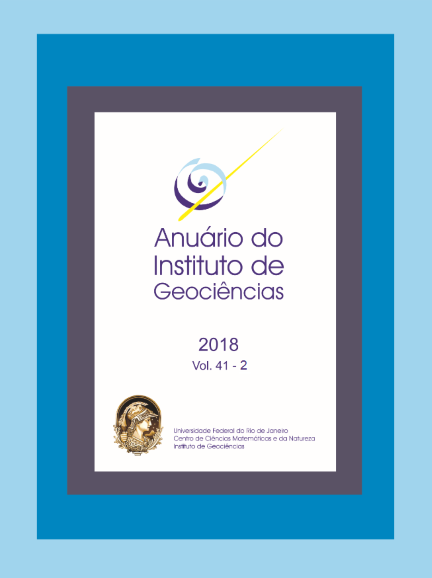Upper Cretaceous Palynology of the Campos-01 Well, Northern Campos Basin: Paleoenvironmental Inferences
DOI:
https://doi.org/10.11137/2018_2_332_343Keywords:
Palynology, Paleoenvironment, Cretaceous, Campos BasinAbstract
A detailed palynological analysis was conducted on 29 samples obtained from the Cretaceous interval of the well Campos-01, drilled in the Northern portion of the offshore Campos Basin. The main objectives of this study were to precise the age the rocks and to perform an analysis and interpretation of the depositional environment of the interval. The material consists of mainly shales, marls, calcareous mudstones and sandstones deposited in a deep marine environment. The palynological analysis consisted on identification and counting of all palynomorphs. The paleoenvironmental and paleoecological investigations were supported by cluster analysis, ecological indices (e.g. diversity, dominance) and ratios (e.g. continental:marine) were used. A total of 97 taxa was identified, which included 46 genera of dinoflagellates cysts, 25 genera of spores, 21 genera of pollen grains, 2 genera of freshwater algae and microforaminiferal linings. The recorded assemblage (e.g. Trichodinium castanea, Dinogymnium acuminatum, Zlivisporis blanensis) was assigned to a late Campanian—late Maastrichtian age for the studied section. The interval is clearly dominated by the dinoflagellate cysts that reach 90.7% of total of palynomorphs. On the basis of cluster analysis (r-mode) three dinoflagellate associations were recognized: Systematophora, Areoligera and Spiniferites. The stratigraphic distribution of dinoflagellates associations indicates three intervals (I1-I3). The intervals I1 and I2, dominated by Systematophora and Spiniferites respectively, are interpreted as open marine environment. In the interval I3, the dominance of Areoligera Association indicates a nearshore environment, also supported by the large amount of continental elements, including the genus Callialasporites, which is attributed to high altitude flora, suggesting the presence of highland feeding areas.Downloads
Download data is not yet available.
Downloads
Published
2019-09-09
How to Cite
Azevedo, S. M. L. de, Carvalho, M. de A. and Rios-Netto, A. de M. (2019) “Upper Cretaceous Palynology of the Campos-01 Well, Northern Campos Basin: Paleoenvironmental Inferences”, Anuário do Instituto de Geociências. Rio de Janeiro, BR, 41(2), pp. 332–343. doi: 10.11137/2018_2_332_343.
Issue
Section
Article
License
This journal is licensed under a Creative Commons — Attribution 4.0 International — CC BY 4.0, which permits use, distribution and reproduction in any medium, provided the original work is properly cited.















